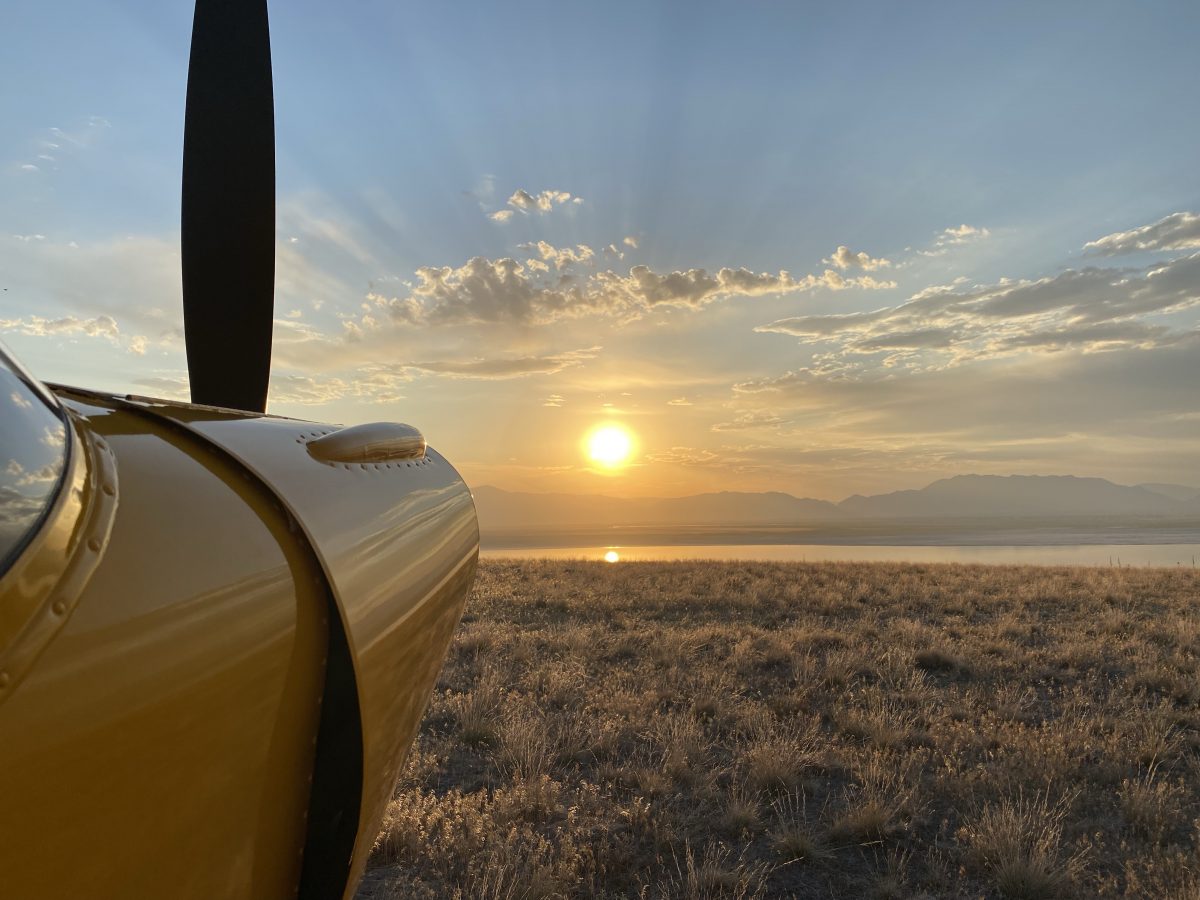The heat of the summer makes flying vintage, “underpowered” airplanes in the high desert a challenge. Record highs across the west make you wonder if the designers of these flying machines even fathomed their operation in such an unforgiving environment. Oil temperatures that dance the ragged edge on what is comfortable force you to reconsider earlier stances made on whether to modify what the original architects thought was sufficient. Surely, the technology exists to provide improvements to 70+ year old airplanes, but whether the comforts that may come from such additions would take away from the experience and the soul of the machine weighs on me as I wax poetic on the visceral relationship I’ve formed with three-seven hotel. And more than those memories I’ve made with the Cub, I slowly begin to ponder the relationships that will be built with the hands and hearts of my children as we quickly approach the time in their life where we switch seats and begin their flight training.
Until those hours are spent teaching my kids the time-honored traditions of flying the Cub in the mountains, days like this one were gifts to be enjoyed. Higher than forecast morning temperatures likely kept most students and instructors on the ground, leaving our sanctuary at Fremont Island to be enjoyed with plenty of peace and a lot more quiet. Windows and doors open, the salted air above the Great Salt Lake tricks you into thinking there’s some relief from the warm air leaving the engine that happens to breeze past your right arm hanging out in the wind. A warm breakfast scramble paired with a raspberry hibiscus tea compliments the conversations that transcend the rigors of daily life. While they could continue through infinity, the warming of the outside air and the impending collapse of a fatigue account overly withdrawn from bring me back to my earlier discussion on modernization.
The purest form of flight within my reach is the Cub. At work, five 15 inch screens fire off millions of photons of information that satiates the overly-observant data nerd inside me. Through the side stick controller, small movements are interpreted by a bunch of computers in mere nanoseconds that command flight controls to what was hopefully translated correctly. In the Cub, the most technologically advanced piece of equipment in the entire airplane is the phone I’m typing these words on. Analog gauges that convert pressures and temperatures into needle movements dance before eyes that could frankly give a damn what they say, short of the oil temperature when it’s over 85 degrees outside. Someone once asked me what the stalling speed of the Cub was, and when I replied “when the lower door starts to move upward,” they chuckled and then asked “no, really.” Apparently a two foot door moving out of position in the corner of my eye isn’t enough.
Distractions, whether intentional or incidental, absent in the Cub, are what allow you to take in the experience through all your senses. Slowly but surely, bonds are formed, a new language is discovered as your once ground-based body gains those wings and soars into the skies above. Data-hungry eyes once busy watching the ground speed change with the winds aloft now seek out the reflected sunlight off of the ground below. Watching the wind interact with the surface of the Great Salt Lake, observing the many groups of my avian friends likely enjoying the morning much like Josh and I, gazing towards the horizon, not letting one moment aloft go without an intense focus on the experience in the hopes that when the wind blows and the temperature rises, I can replay them in such vivid detail in my mind…that’s where my focus is.
More than just stick and rudder skills, my hopes are that through our past and future adventures across the intermountain west, the future stewards of three-seven hotel (read: my children) have felt more in their hearts than what was seen by their eyes. The subtle cues three seven hotel shares with you through the flight controls, a language that only the most observant aviators can discern, will slowly become second nature to them. That early mornings such as this one, whether born out of necessity or convenience, will not be met with resistance, but with excitement. The environmental conditions this morning may have limited what may have been capable, but the continued education on making more out of less will be a foundation that not only will bring forth a great aviator, but human in general.
